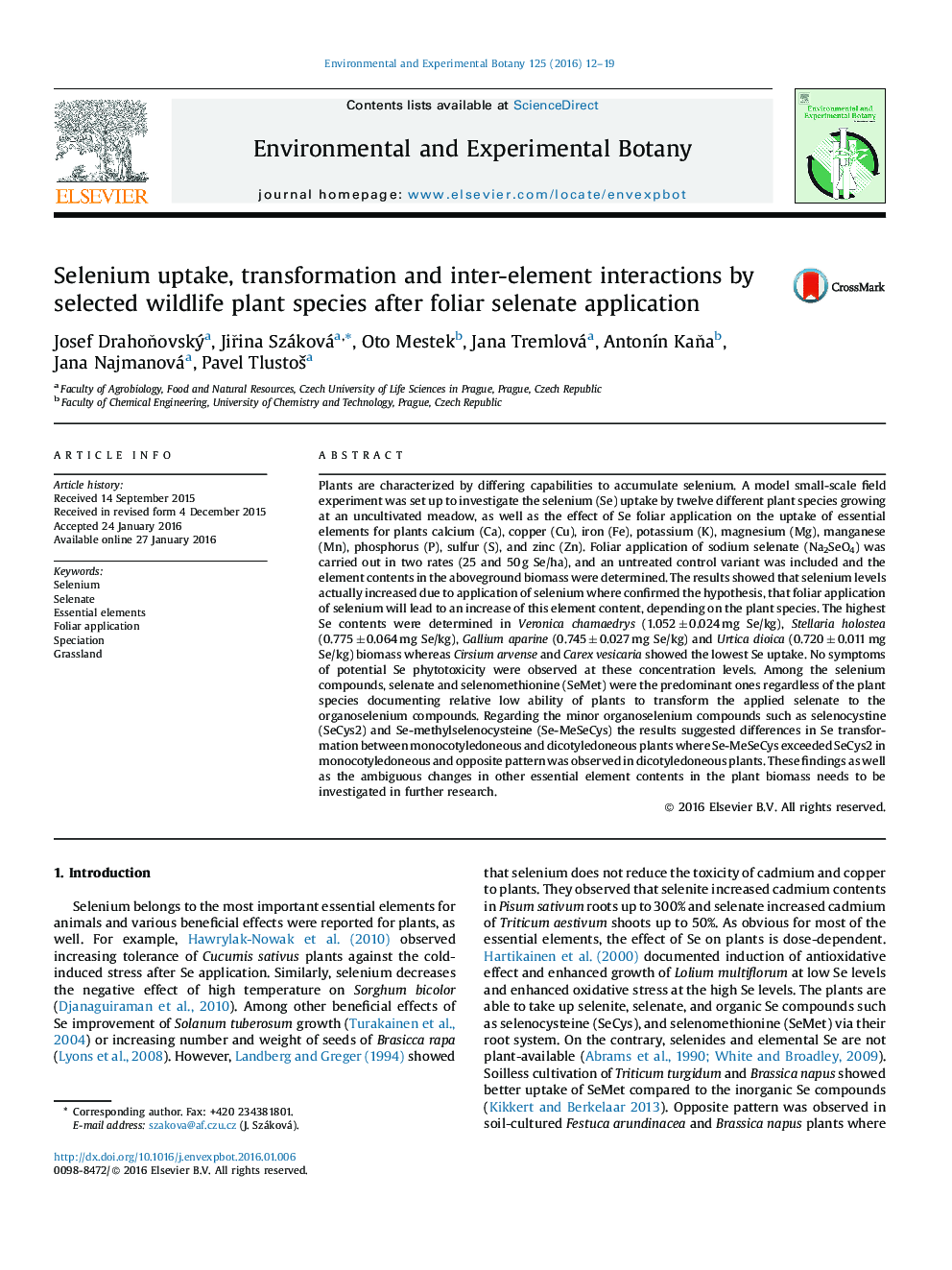| کد مقاله | کد نشریه | سال انتشار | مقاله انگلیسی | نسخه تمام متن |
|---|---|---|---|---|
| 4554089 | 1628052 | 2016 | 8 صفحه PDF | دانلود رایگان |
• Foliar Se application increased Se contents in aboveground biomass of wildlife plants.
• Selenization results in different Se uptake and speciation in different plant species.
• Increased Se contents in biomass provoked various changes in macro- and micronutrient status.
Plants are characterized by differing capabilities to accumulate selenium. A model small-scale field experiment was set up to investigate the selenium (Se) uptake by twelve different plant species growing at an uncultivated meadow, as well as the effect of Se foliar application on the uptake of essential elements for plants calcium (Ca), copper (Cu), iron (Fe), potassium (K), magnesium (Mg), manganese (Mn), phosphorus (P), sulfur (S), and zinc (Zn). Foliar application of sodium selenate (Na2SeO4) was carried out in two rates (25 and 50 g Se/ha), and an untreated control variant was included and the element contents in the aboveground biomass were determined. The results showed that selenium levels actually increased due to application of selenium where confirmed the hypothesis, that foliar application of selenium will lead to an increase of this element content, depending on the plant species. The highest Se contents were determined in Veronica chamaedrys (1.052 ± 0.024 mg Se/kg), Stellaria holostea (0.775 ± 0.064 mg Se/kg), Gallium aparine (0.745 ± 0.027 mg Se/kg) and Urtica dioica (0.720 ± 0.011 mg Se/kg) biomass whereas Cirsium arvense and Carex vesicaria showed the lowest Se uptake. No symptoms of potential Se phytotoxicity were observed at these concentration levels. Among the selenium compounds, selenate and selenomethionine (SeMet) were the predominant ones regardless of the plant species documenting relative low ability of plants to transform the applied selenate to the organoselenium compounds. Regarding the minor organoselenium compounds such as selenocystine (SeCys2) and Se-methylselenocysteine (Se-MeSeCys) the results suggested differences in Se transformation between monocotyledoneous and dicotyledoneous plants where Se-MeSeCys exceeded SeCys2 in monocotyledoneous and opposite pattern was observed in dicotyledoneous plants. These findings as well as the ambiguous changes in other essential element contents in the plant biomass needs to be investigated in further research.
Journal: Environmental and Experimental Botany - Volume 125, May 2016, Pages 12–19
